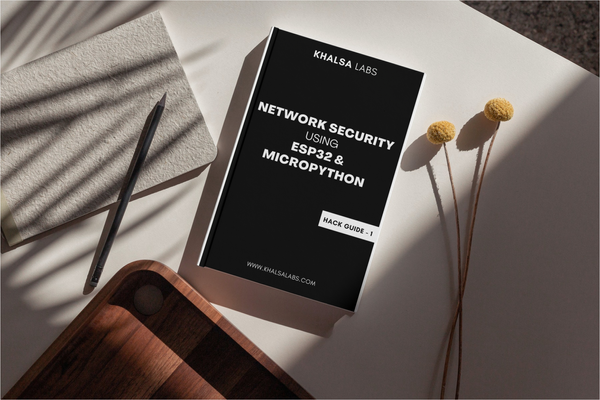The top 5 mobile solar chargers for 2022

Many people compare voltage and amperage to water pressure and pipe size, respectively, using the example of piping water. Voltage and Amperage both have a role in the production of electricity, therefore when evaluating solar chargers, these two quantities are multiplied to get the quoted “wattage” of solar panels. In other words, a charger produces 12 Watts of power when it outputs a total of 5 Volts over a single 2.4 Amp USB. We examined panels that provide adequate electricity without adding bulk and range in size from 15 to 28 Watts.
However, even in direct sunlight, most panels fail to produce the claimed number of Volts and Watts. Additionally, certain devices constantly charge at lower Amps. Some portable chargers work regardless of the weather, while others lose power when clouds are in the sky and subsequently fail to reconnect. When looking for a portable charger, size and weight are important considerations as well. To help you select the finest portable solar charger for your needs and budget, we researched the market.
Anker PowerPort 21W
The most effective portable solar charger
Pros and disadvantages
Pros
- Rapid charging
- Not limited by the shade
- Light
- Warranty of 18 months
Cons
- Comparatively pricey
- Frequently out of stock
More information
- Technical data Wattage: 21W
- Auto-reset: Yes
- Ports: 2 USB-A
- Amps: 2.4 each (3A maximum)
- Weight: 14.7 oz
- Dimensions: 11.1 x 6.3 x 1.1 inches (folded)
Despite costing a hefty $74, Anker is the finest all-around solar charger on our list for a number of reasons, which also explain why it’s frequently out of stock. According to studies, the compact, premium product is among the fastest chargers, recharging a phone from zero to thirty percent in just thirty minutes. However, its capability to efficiently charge two gadgets at once also amazes people (which most panels fail to do despite advertised claims).
Another successful feature concerning this solar plate is allure strength to recover from cloud interruptions, that most cosmic chargers fight with. The Anker PowerPort is also tough, accompanying mechanical-substance PET polymer solar containers and weather-opposing polyester picture. But for the charging capacity, it’s still unusually svelte. The 3 panels fold into a newspaper-judge square and weigh an giving small ground for hope light 14.7 ounces — the easiest in this place lineup.
The PowerPort can surely put on clothing the following your pack, or you can use elastic loops to swing it in the star. That habit, it can stimulate the battery pack or a design bundled inside.
Plus, it visage a 30-day return procedure and 18-temporal length of event or entity’s existence promise, building upon Anker’s character for reliable, depiction products. This extravagant but in vogue tool is the best lightweight cosmic plate on the market.
BigBlue 5V 28W Solar Charger
Most trustworthy lightweight solar plate
Pros & cons
Pros
- Modest price
- Impervious to clouds
- Durable
- Optional Digital Ammeter
Cons
- Bulky
More analyses
- Tech specs: Watts: 28W
- Auto reset: Yes
- Ports: 3 x USB-A
- Amps: 2.4 each (5V/4.8A top)
- Weight: 20.5 oz
- Size: 11.1 × 6.3 x 1.1 inches (encased)
It may be a thin coexistence that the most reliable but bulky committee on this list (BigBlue) is further the nickname for individual of ultimate reliable but immense technology associations in the experience (IBM). Just as IBM brightened its prominence in individual estimating, BigBlue has fast become the de-facto standard in the substitute-30W battery powered by the sun world.
This solar plate is difficult, taking everything in mind it has 4 panels attach to 3 USB ports. It’s not as fast as Anker’s charger, but consumer reviews freak out about the tool’s flawless reliability and capability to charge schemes as a whole sorts of weather. For cloudy environments, this cosmic plate is the certain king. Plus, it appearance a celestial automobile-continue function, which admits it to start operating system later cloud interference.
Hardy PET polymer panels and canvas material manage long-lasting, while elastic gaskets cover USB ports from water. When you factor in the recently weakened $58 printed price, the excellent lineaments concerning this maneuver can outweigh allure big design. It can likewise offer you a impression of quiet confidence event nowhere, aware you are outfitted accompanying the most trustworthy energy-producing station that services can buy.
Ryno-Tuff 21W
Fastest convenient cosmic plate
Pros & cons
Pros
- Fast taxing skill
- Light
- Durable
Cons
- Not excellent in the shade
More analyses
- Tech specs: Watts: 21W
- Auto relocate: Yes
- Ports: 2 x USB-A
- Amps: 2.4 each (5V/3A top)
- Weight: 16.6 ounces
- Size: 5.9 x 11.8 x 0.79 fingerbreadth (closed)
Ryno-Tuff is the ‘little powerful that can’ concerning this list. It punches above allure burden when it meets expectations taxing speed. Testers voice that Ryno-Tuff’s 3 panels give logical crop fast in brilliant brightest star. It can charge your telephone until 33% in just 30 proceedings by way of two together USB ports. Plus, he Ryno-Tuff can even charge two phones immediately, that most panels can’t favorably do.
The supercharger’s only Achilles’ heel? It starts to sputter when clouds roll overhead, different shade-openminded chargers like BigBlue. But these are absolute trifles when you deem allure inexperienced speed and rough build. Plus, this cosmic plate has an extreme-compact and light habit at 16.6 ounces, and an appealing price of $63. Who experiences, subsequently few dabbling in the testing room over the next period, Ryno concede possibility be the committee to beat.
Nekteck 21W
The most cost-effective and flexible portable solar charger
Pros and disadvantages
Pros
- Robust, effective panels
- Trustworthy charger
- Versatile
- Beautiful design
Cons
- Not as tolerant of shade as BigBlue
More information
- Technical data Weight: 18 ounces
- Watts: 21W; Auto-reset: Yes
- Ports: 2 USB-A
- Amps: 2.4 each (5V/2A max)
- Dimensions: 5.9 x 11.8 x 0.79″ (folded)
Nekteck has succeeded in keeping pace with some formidable opposition on this list. The company is known for producing robust panels that deliver raw power with exceptional efficiency. It might not be as portable as the Anker, as dependable in hazy situations as BigBlue, or even as quick a recharge as the Ryno-Tuff. However, it performs each of these tasks nearly as well as the champions in each of its respective categories, earning it a spot on this list.
The gadget has two USB ports, highly efficient water-resistant solar panels, and a zipped pouch for securely storing wires and gadgets. If you want a reliable device at a reasonable price, the Nekteck is a great option. The $40 deal is difficult to refuse.
Choetech 19W
Portable solar charger for the money
Pros and disadvantages
Pros
- Strong charger
- Stable
- Small in scale
Cons
- Less adaptable than some of the others
More information
- Technical data Size: 10.2 x 6.30 x 0.67
- Watts: 21W
- Auto reset: Yes
- Ports: 2 x USB-A
- Amps: 2.4 each (4.5V/2A max)
- Weight: 17 ounces (folded)
The 19W solar charger from Choetech has been in existence for ten years and will continue to do so for at least another. The tiniest charger on our list, this ultra-compact one slides into your pack with ease. Additionally, it is nearly as lightweight as Ryno-Tuff.
The tiny charger is a powerhouse with dual 2.5 Amp USB charging ports that can charge gadgets almost as quickly as the Ryno-Tuff. The Choetech is known for being a very reliable charger that can output up to 9W. Additionally, it can adapt well to shifting clouds.
At the present price of $30 at Walmart (as opposed to $79 on its own website), Choetech is an unbeatable choice. It is constructed with inserted metal rings for improved connection onto backpacks. On any given day, it can compete favourably with the Ryno-Tuff or the Nekteck.
Which portable solar charger is the best?
Our pick for the top portable charger is the Anker 21W solar charger. It is the only one that, in spite of its high cost, demonstrates strong capabilities across the board. Also, testers and gearheads have unanimously crowned it the queen.
It can simultaneously charge two smartphones quickly, and it reliably resumes charging when the cloud is interrupted. It’s a fairly tough piece of machinery. The best part is that it doesn’t skimp on size; it is among the list’s tiniest and lightest selections.
Anker PowerPort 21W
Price = $82
Charge Restoration = Yes
Charging Power = Powerful
Size = Small and light
BigBlue 28W
Price = $57
Charge Restoration = Yes
Charging Power = Medium
Size = Large and heavy
Ryno-Tuff 21W
Price = $62
Charge Restoration = Struggles
Charging Power = Powerful
Size = Small and light
Nekteck 21W
Price = $50
Charge Restoration = Sometimes struggles
Charging Power = Medium
Size = Small and somewhat light
Choetech 21W
Price = $30
Charge Restoration = Sometimes struggles
Charging Power = Powerful
Size = Small and light
How did we select these travel-friendly solar chargers?
We combed the area in search of solar chargers that matched the following requirements: They had to be less than 30W and above 15W (anything less makes charging too meagre) (above which the panels get too large and unwieldy for a camping or backpacking trip). As a bare minimum, they have to excel at charging on sunny days. Additionally, chargers have to be strong, transportable, and reasonably priced. They had to be highly rated by both reputable consumers and gear testers.
What size charger do I require?
The surface area of the solar panel that can generate power increases with charger size. The size of the panel you can carry will, however, be automatically limited by the type of travel you take. Anything larger than 28W could be difficult to transport for hiking and camping. Anything less than 15W could cause problems because smaller panels have more difficulties charging, particularly in unfavourable conditions. A poor power source also prevents many devices from charging at all. If you’ll be spending most of your time outdoors in sunny conditions, seek for one that is strong, light, and small. Look for a solar charger with huge panels if you want something dependable in all kinds of weather.
Do I need to think about chargers with built-in battery packs?
I advise you to stay away from solar chargers with integrated battery packs. They frequently have integrated units, so if the battery pack experiences a problem, your charger can become inoperable. A separate external battery pack that you may charge during the day and use to power your other gadgets at night is a better option. A battery with a good weight to storage ratio is what you want. Before you purchase it, confirm that it contains the ports that your devices require.
Are there any portable solar charger alternatives that merit consideration?
There are a few, however they might not meet all the requirements for this list. Nevertheless, it’s a good idea to constantly be on the lookout for new products that have made spectacular debuts or that have significantly outperformed earlier models.



